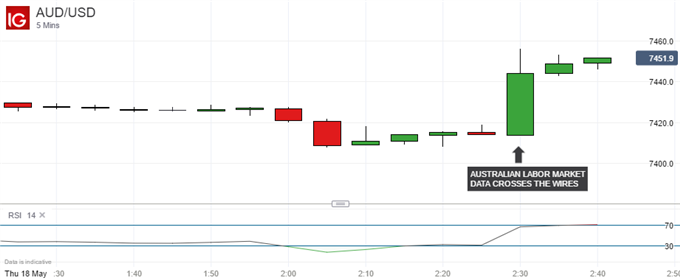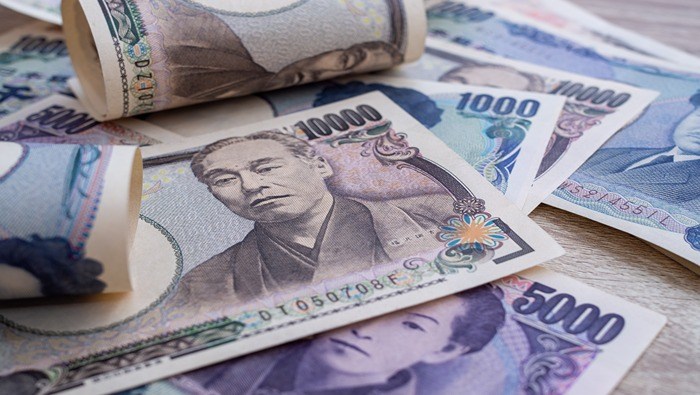Talking Points:
- Australian employment levels surged in April, taking the jobless rate down
- The figures were far better than markets had predicted
- However, part-time jobs surged at the expense of full-time positions
Get live coverage of all major Australian economic events with the Daily FX webinars.
The Australian Dollar got a lift Thursday from official April labor-market data which smashed some estimates out of the park.
Most notably perhaps employment grew by 37,400 positions. This was massively ahead of the 5,000 expected and a nice encore to the strong, 60,900 rise seen in March. Moreover the employment rate fell to 5.7%, below the 5.9% expected- which was also the March level.
It wasn’t all good news, however.
Full-time employment fell, by 11,600 jobs, with part-time positions surging by 49,000, and the overall participation rate was steady at 64.8%. The full-time/part-time skew may explain the arguably muted reaction of AUD/USD. It rose very slightly but remained broadly around the 0.7440 area where it had been before the data.

The Reserve Bank of Australia made it clear once again in the minutes of its last monetary policy meeting that labor-market progress is a key metric it will be watching. However, wage data appear to be conforming to the patter of modest rises expected by the RBA, and so won’t exert huge upward pressure on inflation.
Rate-futures markets do not price in any change to record low Australian interest rate markets this year. Investors are reasonably sure that the next move, when it comes will be a rise. The RBA has repeatedly made clear its reluctance to further stoke household borrowing with lower rates. But no such rise is fully priced for at least the next eighteen months.
The RBA will not doubt welcome strong overall employment levels, but will want to see evidence of much more reliable full-time job creation.
--- Written by David Cottle, DailyFX Research
Contact and follow David on Twitter: @DavidCottleFX







